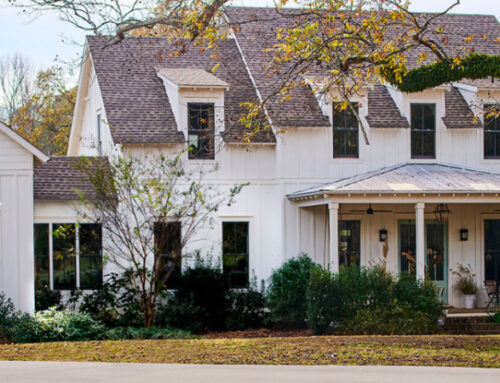An all-white room isn’t as simple as it may seem. If not done properly, the room can feel stark or boring. Clean it too frequently with bleach, and all of a sudden you are transported to every doctor’s office you have ever visited. This is especially true when it comes to kitchens. There are so many hard surfaces in this space — countertops, flooring, appliances, cabinetry — that a white kitchen can end up feeling sterile. Since kitchens are the hub of the home, they should feel warm and inviting. There are plenty of ways to use materials, light and texture to make the kitchen feel warm and inviting. Here are eight tips to help you plan the white kitchen of your dreams.
1. Layer Shades of White
Avoid a sterile look by mixing whites. If you use just one shade, the room can end up looking flat. Instead, choose three or four shades of white and place them on different materials around the kitchen. This will add dimension and interest throughout the space. While you are bringing in different shades of white, avoid mixing warm whites with cool whites. Warm tones look more yellow, and cool tones look more blue. Most paint retailers will present their warm whites and cool whites separately, which will help you find whites in the same group.
2. Use a Statement-Making Material
A well-designed white kitchen will depend on the finish materials used in the space. Materials like Carrara marble have strong visual appeal and instantly make a statement, even in a white-on-white environment. As a general rule, limit materials with a lot of movement (such as the flowing patterns in marble) to just one element, usually the backsplash or countertop. Choosing subtler materials for other surfaces allows the statement-maker to shine.
3. Bring On Texture
Bringing in materials with various textures — both tactile and visual— adds depth to a predominantly white kitchen. This can be done by mixing shiny with matte and rough with smooth for a dynamic look.
4. Add Accent Colors
Splashes of color in a white kitchen help play up the cabinetry. Choose a small number of contrasting colors — one, two or maybe three. Then repeat them in accessories to pull the theme together. Places to try adding a bit of color include seating, lighting, countertop canisters, rugs, backsplashes and hardware.
5. Take Advantage of Natural Light
Natural light from a window or skylight is a great benefit for any kitchen, but especially for a white kitchen because it bolsters the bright and airy feel you were going for in the first place.
Tip: Window treatments in adjoining rooms can make a difference too. Consider using shades that can be pulled up completely in the daytime. This will allow even more natural light to filter into your kitchen.
6. Provide Softness
Fabrics bring pattern and softness into a white kitchen. Window treatments are an easy way to do this. You can also bring in fabrics through floor runners or other smaller rugs, or choose bar stools covered in fabric or leather instead of wood.
Let the kitchen island stand apart from the rest of your work surfaces by topping it with a different color or material. This bit of contrast also breaks up the room and provides your eyes with a nice resting place.
8. Bring Texture to the Backsplash
A white backsplash can be a great focal point, even if it’s all white. You can create this interest by using a pattern or textured material, such as mosaic stone, a three-dimensional tile, painted brick or a herringbone pattern. Because the backsplash is one of the first things you see as you walk into a kitchen, and because it is such a small area, don’t be afraid to go bold with your pattern or textured pick.
There you have it, eight ways to create a welcoming white kitchen. Now get out there and remodel away! But maybe read our tips on how remodel first.
Looking to buy or sell in the Nevada County area? Give a Coldwell Banker agent a call today!





